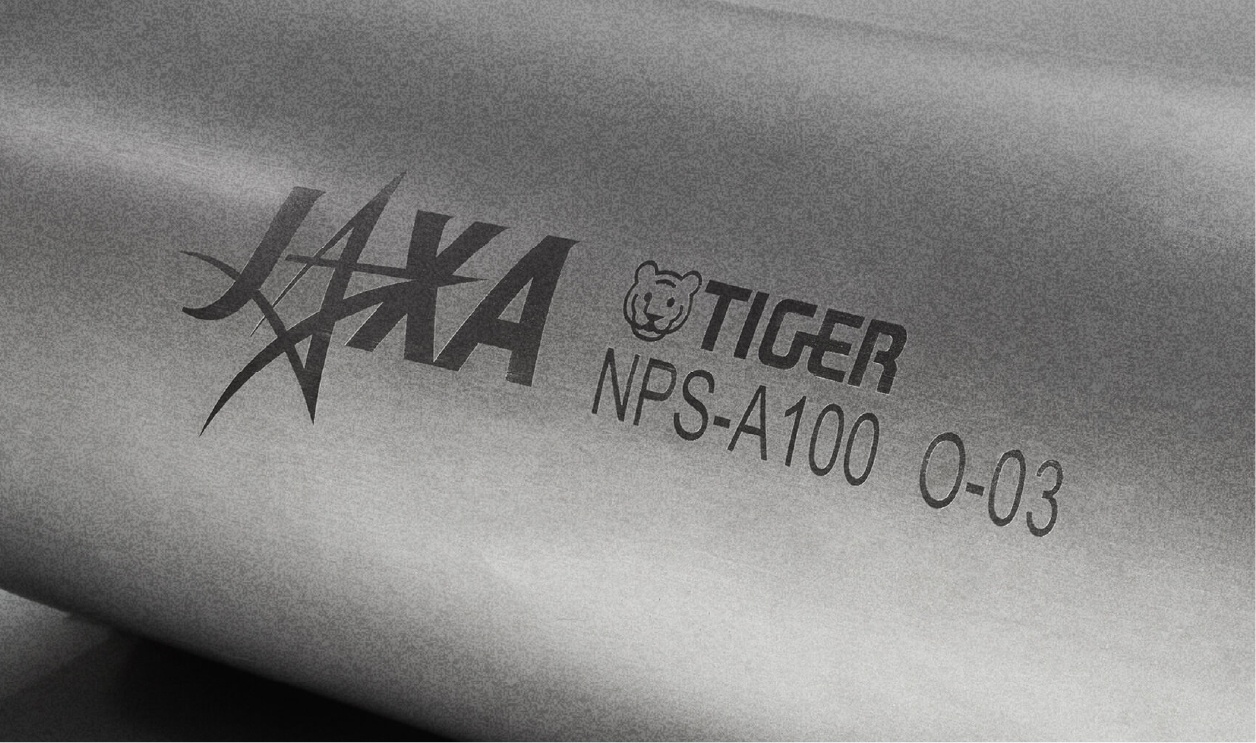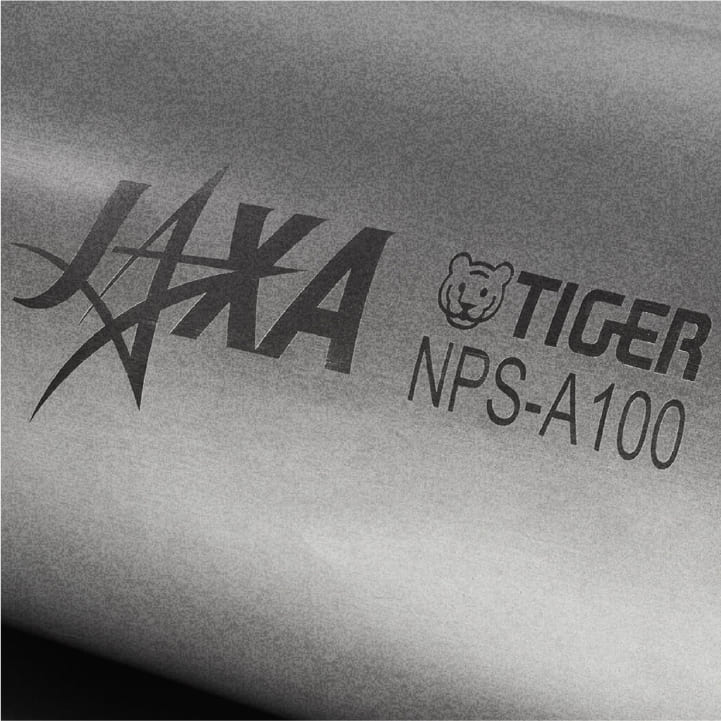Case Studies of Industrial Equipment Solutions
Double-walled, Vacuum-insulated Container for Housing Space Experiment Samples
The container was developed jointly by Tiger Corporation and Japan Aerospace Exploration Agency (JAXA).
Tiger contribited to the management to maintain temperature and ensure high durability.
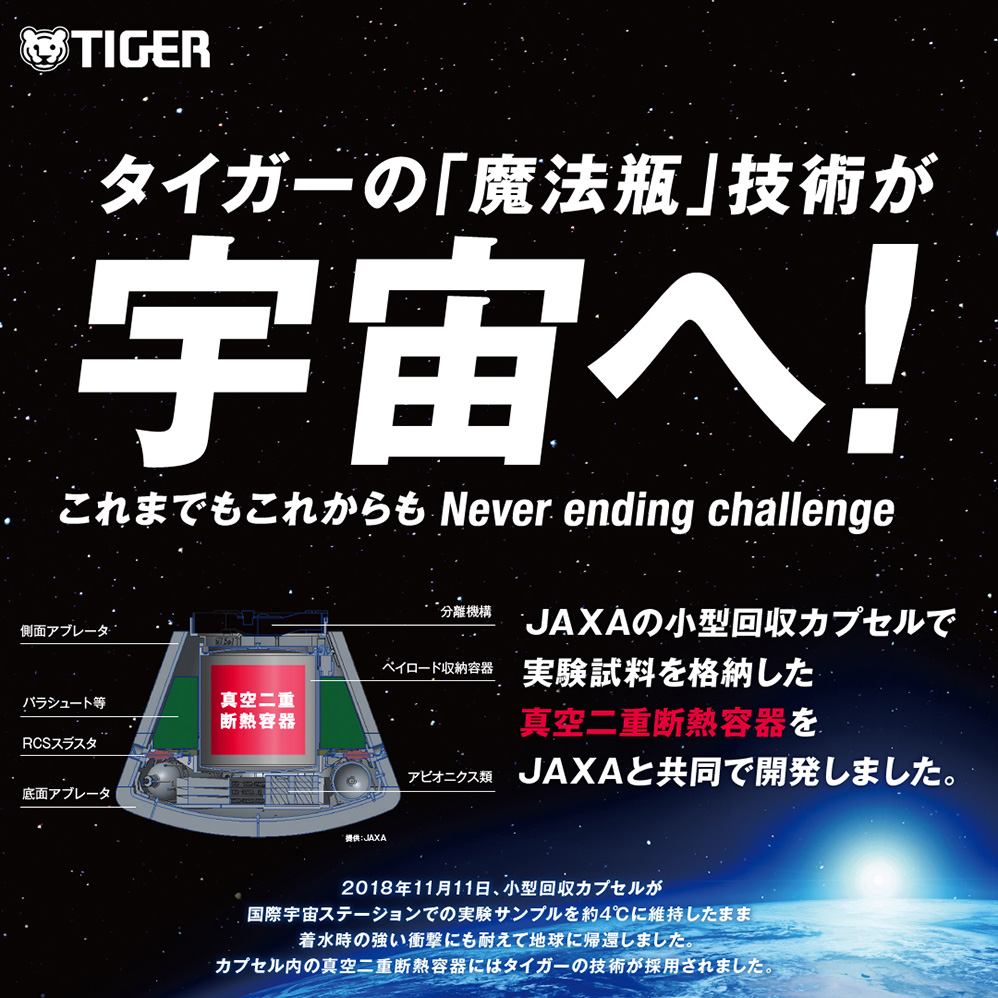
Background to the development
Tiger Corporation was in charge of developing the double-walled, vacuum-insulated container for housing valuable space experiment samples, and it was incorporated in the small re-entry capsule for transporting materials from the International Space Station (ISS) to Earth (the small re-entry capsule was developed by JAXA to be carried on board the H-II transfer vehicle Kounotori 7).
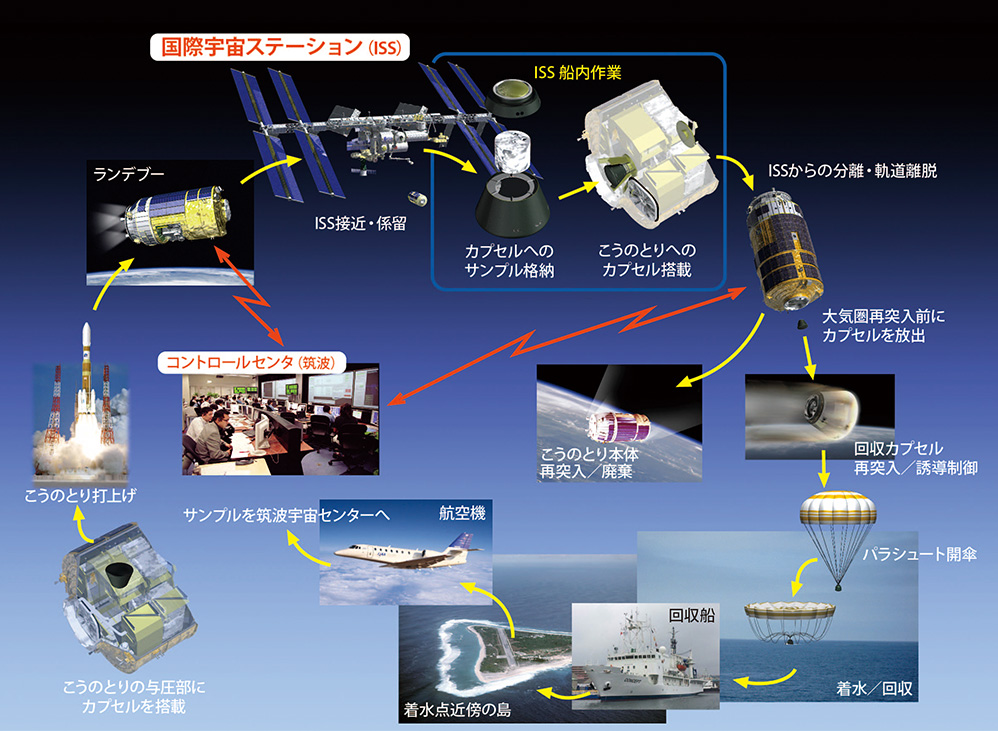
Overview of the mission of the small re-entry capsule developed by Japan Aerospace Exploration Agency (JAXA) (provided by JAXA)
Functions and performance required for the double-walled, vacuum container in the capsule
- The successful recovery of materials from the ISS for the first time in Japan was announced. High thermal insulation performance to maintain experimental samples requiring refrigeration within a predetermined temperature range (4℃ ± 2℃ for at least four days)
- High strength to withstand the strong impact (forces of 40G) when the capsule lands on the sea
Composition of the small re-entry capsule and overview of the double-walled, vacuum-insulated container for the capsule
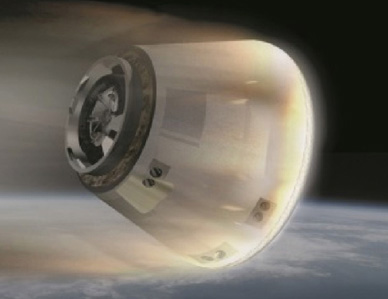
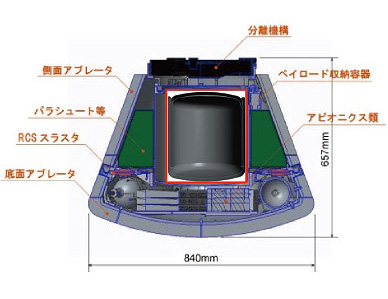
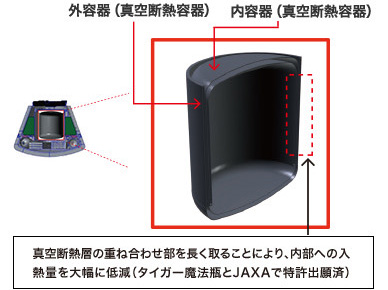
History of the development of the insulated container and small re-entry capsule
*All the dates and times are based on Japan Standard Time.
- April 2014
- Tiger Corporation received an inquiry from JAXA about manufacturing a custom-designed vacuum container through the “Inquiries about Industrial Equipment” page. Tiger started to find a way to cooperate with that.
- November 2015
- Second contact from JAXA.
Carefully considerd if Tiger could meet the JAXA’s high demands of “insulation performance to maintain the temperature inside the container at 4°C ±2°C for at least four days and strength to withstand a load of up to 40G” that had never been possible with household vacuum bottles; then finally the R&D team decided to challenge and get involved in the project. - December 2015
- Started the joint development by JAXA and Tiger Corporation. Prototype manufacturing for temperature experiments and performance verifications were repeatedly conducted.
- August 2016
- The third prototype had a success in terms of insulation performance to “keep the temperature inside the container at 4°C ±2°C for five days” with a refrigerant.
- November 2016
- Tiger Corporation launched the development of a flight product that would meet the requirements of JAXA.
The company aimed to reduce the weight of the prototype product to “10.195 kg or less” without compromising the cold storage performance and strength. - May 2017
- A flight product lighter by about 45% than the first prototype product weighing 17.8 kg was delivered to JAXA.

- July 13, 2018
- The launch of Kounotori 7 (HTV7) was announced.
http://www.jaxa.jp/press/2018/07/20180713_h2bf7_j.html - September 11, 2018
- The launch was postponed due to adverse weather was forecast in Guam, where one of JAXA’s tracking stations is located.
- September 14, 2018
- The launch was postponed due to adverse weather was forecast.
- September 15, 2018
- The launch was canceled due to an additional investigation needed for the propulsion system of the rocket.
- September 20, 2018
- The launch was postponed due to adverse weather was forecast.
- September 23, 2018
- At 2:52:27, the launch was successfully done.
- September 28, 2018
- Kounotori 7 successfully berthed in the International Space Station (ISS).
- November 8, 2018
- Kounotori 7 separated from the International Space Station (ISS).
- November 11, 2018
- At 6:14, Kounotori 7 re-entered the atmosphere.
The mission of the H-II transfer vehicle Kounotori (HTV7) was completed.
Recovery of the small re-entry capsule (HSRC)
(photo provided by JAXA)
The double-walled, vacuum-insulated container (vacuum bottle structure) being taken out from the payload storage container recovered from the small re-entry capsule (HSRC) (photo provided by JAXA)
- November 13, 2018
- At 4:50, the experiment samples in the small re-entry capsule landed at Marcus Island.
- November 13, 2018
- At 5:17, the aircraft carrying the experiment samples departed from Marcus Island.
- November 13, 2018
- At 9:42, the experiment samples arrived at Tsukuba Space Center.
- November 17, 2018
- Around 16:00, the transport vehicle carrying the main body of the small re-entry capsule arrived at Tsukuba Space Center.


The payload storage container, double-walled, vacuum-insulated container (vacuum bottle structure), and other components publicly presented at the press conference for the small re-entry capsule (HSRC) (photo provided by JAXA)
- November 27, 2018
- The successful recovery of materials from the ISS for the first time in Japan was announced.
This case study also led to the second mission.
For more information on the second phase, click here.
Other Case Studies
About Industrial Equipment Solutions
Contact Us
For more information, contact us from here;
On research and development, methods of applying vacuum insulation technology,
and inquiries about partnership


